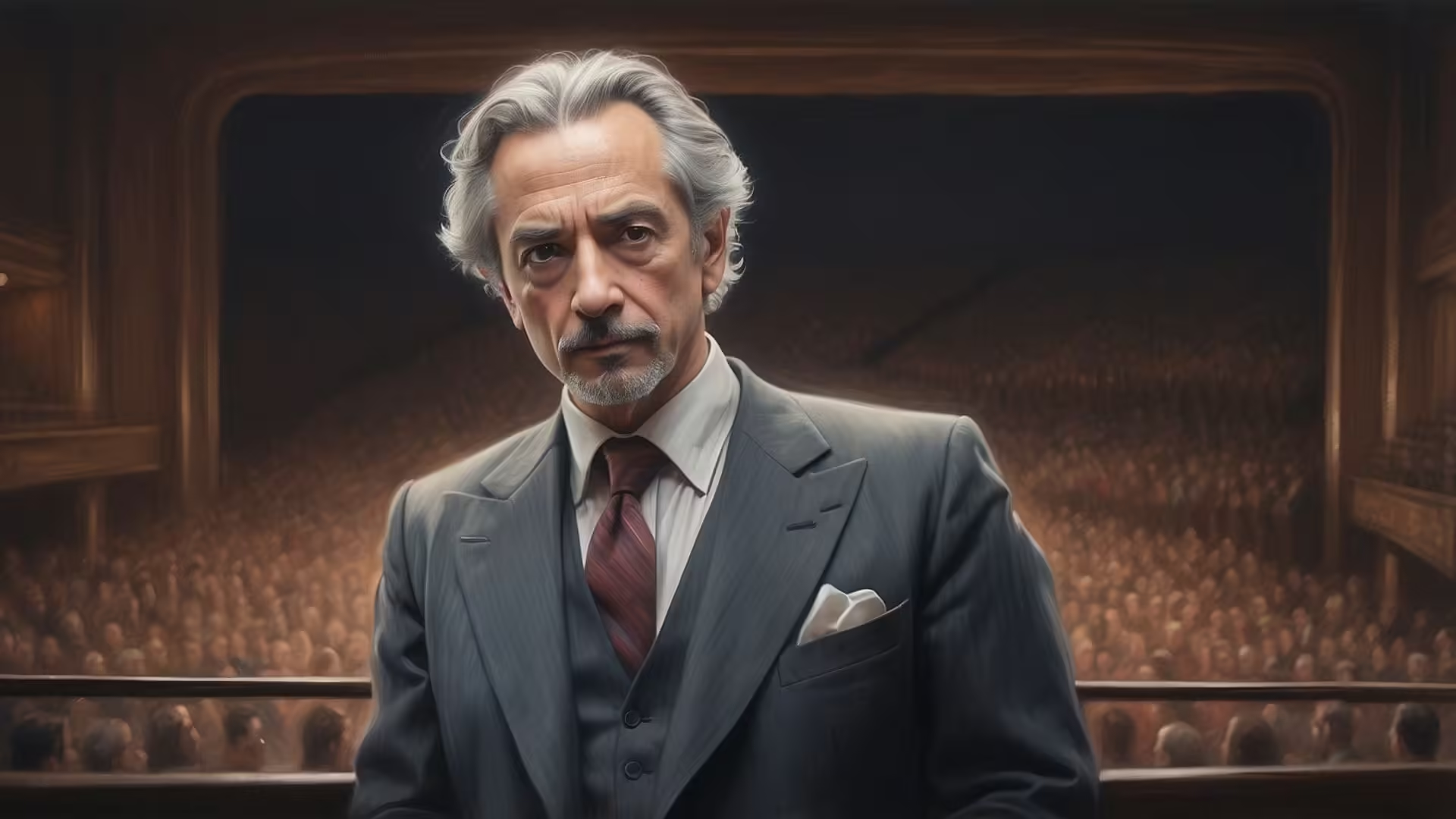Theater directors are often the invisible hands behind unforgettable stage performances. While actors take the spotlight, directors are busy orchestrating everything from character development to set design. Their job is to shape the artistic vision of a production and guide a team of creatives—actors, designers, stage managers, and technicians—toward a shared goal. But what does the day-to-day life of a theater director really look like? And what skills are essential for excelling in this demanding yet rewarding role? In this article, we’ll take a closer look at the behind-the-scenes work of theater directors, from the initial planning stages to opening night.
Developing the Vision
A theater director’s journey begins long before the actors step onto the stage. It starts with the script. Whether it’s a Shakespearean classic or a contemporary drama, the director’s first task is to uncover the heart of the story. They ask questions like, “What themes are most relevant?” and “How can this play connect with today’s audience?” Directors then develop a concept—a unique vision that shapes everything from costumes to set design. This creative direction guides every decision made throughout the production process.
Directors also collaborate closely with playwrights and dramaturgs (when available) to understand the nuances of the script. If the play allows room for interpretation, directors may take bold creative liberties, setting the story in a new era or exploring unexpected themes to offer a fresh perspective.
Casting: Finding the Perfect Ensemble
Once the vision is in place, the next step is casting. Directors need to select actors who not only fit the roles but also bring the right energy and chemistry to the ensemble. Casting isn’t just about talent—it’s about finding performers who can work well together, bringing the characters and story to life in a way that aligns with the director’s vision. Auditions are a crucial part of this process, where directors evaluate not just acting ability but also adaptability and chemistry between cast members.
The director also needs to establish a relationship of trust with the actors. Actors are vulnerable on stage, and a director’s role is to create a safe environment where performers feel comfortable taking creative risks. This relationship becomes the foundation for a productive rehearsal process.
Rehearsals: Where Magic and Chaos Meet
Rehearsals are the heart of the director’s work. This is where the script comes to life through experimentation, blocking (the actors’ movements on stage), and refining performances. During rehearsals, the director wears many hats—coach, motivator, and problem-solver. Some days involve detailed work on individual scenes, while others focus on running the entire production to ensure pacing and transitions flow smoothly.
It’s not all smooth sailing, though. Rehearsals are where creative differences surface, technical issues arise, and actors might hit roadblocks. A director needs patience and strong communication skills to navigate these challenges. They must also be ready to pivot if something doesn’t work as planned, all while keeping the morale of the cast and crew high.
Directors often collaborate closely with stage managers, who handle the logistical side of rehearsals, and with designers to ensure the technical aspects—like lighting, sound, and costumes—align with the production’s overall vision. Every element must work together to create a seamless experience by opening night.
Opening Night and Beyond
The director’s work doesn’t end with the final rehearsal. In the lead-up to opening night, technical and dress rehearsals put everything to the test. This is when directors, actors, and technicians iron out any last-minute issues. Timing becomes critical, and every cue needs to be flawless.
By opening night, the director steps back, allowing the cast and crew to take the lead. Their role shifts from hands-on leader to supportive observer. Watching the production unfold in front of an audience for the first time is a moment of both excitement and vulnerability—there’s nothing quite like seeing months of hard work come to life on stage.
After opening night, the director might still provide feedback, especially during longer runs, to keep performances sharp. But for the most part, the production becomes a living entity, shaped by the energy of the audience and the performers.
The Challenges and Rewards
Being a theater director is as challenging as it is rewarding. It’s a career that requires a mix of artistic vision, leadership skills, and emotional resilience. Directors must manage creative differences, meet tight deadlines, and adapt to unforeseen challenges. At the same time, they need to inspire and unite a diverse team toward a common goal.
The reward comes when everything clicks—when the actors are fully immersed in their roles, the technical elements enhance the story, and the audience is captivated. For a director, there’s no greater satisfaction than knowing they’ve helped create a moment of magic that resonates with the audience.
The life of a theater director is a blend of artistry, leadership, and problem-solving. It’s a role that demands passion and resilience, but for those who love the theater, it’s worth every challenge. Directors bring scripts to life, foster creativity, and guide their teams through the highs and lows of production. Behind every great performance is a director who believed in the story and worked tirelessly to make it happen. Whether you dream of becoming a director yourself or are simply curious about what goes on behind the scenes, one thing is certain—without directors, the magic of theater wouldn’t be the same.
Let’s Talk
So, let’s dig a little deeper into the life of a theater director—because it’s one thing to talk about what they do, and it’s another to really imagine what it must be like to wear that hat day in and day out. It’s not just about being creative; it’s about being the kind of person who can keep everyone on the same page, even when that page seems to change every five minutes. Think about it—directors have to balance vision with reality. They might have this grand idea for a scene, but then, boom, the budget says, “Yeah, no fog machine for you.” So, they adapt. And honestly, isn’t that a skill we all need? Whether it’s adjusting plans for a family trip or figuring out how to throw a dinner party with only half the ingredients—life is a lot like directing, right?
What really fascinates me is how much of the director’s work happens before anyone sees a single scene on stage. It’s like being a chef—most of the magic happens in the prep. They spend hours reading scripts, brainstorming with designers, and making decisions no one will notice unless they get them wrong. And then there’s the casting process. Imagine meeting dozens of talented people, each bringing something unique to the table, and you have to figure out who fits where. It’s like putting together a puzzle, but some of the pieces don’t want to fit, and a few of them might have minds of their own.
And can we talk about rehearsals for a second? Rehearsals are where the real magic—and chaos—happens. Directors have to create a space where actors feel safe enough to try new things, but structured enough to stay on schedule. That’s no small feat. Have you ever tried to get a group of people to agree on something, like picking a movie or deciding where to eat? Now imagine that, but with creative personalities, tight deadlines, and a live audience waiting at the end. It’s wild. And somehow, directors make it work, balancing the need to push actors toward their best performances with the need to keep things moving forward.
What really stands out to me is the emotional intelligence involved. Directors need to understand not just the story but also the people telling it. They have to know when to give a nudge and when to back off, when to encourage an actor and when to challenge them. It’s not just about creating great art—it’s about creating a great working environment too. And honestly, that’s a skill that goes way beyond theater. Think about how much easier life would be if every boss, teacher, or team leader had that kind of awareness.
Then there’s the part that really gets me—the moment they have to let go. After all those weeks of hard work, opening night arrives, and the director steps back. Can you imagine that? It’s like building a sandcastle and then letting the tide take it, trusting that what you’ve built will stand on its own. It takes a special kind of mindset to know when to let go, especially when you’ve poured so much of yourself into a project. And maybe that’s the hardest part—realizing that, at a certain point, the work isn’t just yours anymore. It belongs to the cast, the crew, and the audience. It’s a shared experience now.
What do you think? Have you ever been in a situation where you had to trust others to carry something forward without you? And here’s another thought—if life is a bit like directing a play, what role are you currently playing? Are you the director, guiding things behind the scenes? The actor, bringing things to life in the moment? Or maybe the audience, observing and waiting for your cue to jump in?
Let’s Learn Vocabulary in Context
Let’s dive into some of the key words and phrases that popped up in our discussion about the life of a theater director, and see how they show up in real life too. First, there’s “vision.” In the world of theater, vision is the big picture—the director’s idea of how the entire production should look and feel. But vision isn’t just for the arts. We use it whenever we have a plan for the future, like saying, “I have a vision for how I want my career to grow.” It’s about seeing possibilities before they become reality.
Next is “collaboration.” Collaboration is all about working together to create something bigger than any one person could do alone. Directors need collaboration to bring their vision to life. Think about the last time you worked on a group project—it’s a lot like that. Whether it’s organizing a team event or planning a vacation, collaboration is the key to making things run smoothly.
“Casting” is a term we associate with theater, but the idea behind it shows up in many places. Casting means finding the right people for the right roles. Directors look for actors who fit their characters, but in real life, we “cast” people all the time—like choosing the perfect friend to help you move because they’re reliable and strong, or asking someone detail-oriented to handle a complicated task at work.
Let’s talk about “rehearsal.” A rehearsal is a practice session where people try out ideas, see what works, and make adjustments. The word applies beyond the stage too. Anytime you’re preparing for something—whether it’s practicing a speech or trying out a new recipe—you’re essentially rehearsing. Rehearsals remind us that mistakes are part of the process.
“Blocking” refers to the planned movement of actors on stage. In life, we use blocking when we arrange things to flow smoothly, like setting up a room so people can move around comfortably. Have you ever “blocked out” your schedule to make sure everything fits just right? Same concept.
Next, we have “improvisation.” Improvisation means coming up with things on the spot when there’s no script or plan. Directors encourage actors to improvise during rehearsals to explore different possibilities. And let’s face it, life often calls for improvisation too—like figuring out a backup plan when your original one falls apart last minute.
“Pacing” is another great word. In theater, pacing is about timing—how fast or slow the scenes unfold. But pacing is important in daily life too. Ever heard the phrase, “It’s a marathon, not a sprint”? That’s pacing. Whether you’re working on a long-term project or just managing your energy throughout the day, finding the right pace makes all the difference.
Let’s not forget “opening night.” It’s the big moment when everything comes together, and the public finally gets to see the result. In real life, we all have our “opening nights,” like the first day at a new job or presenting a project you’ve worked hard on. It’s both exciting and nerve-wracking, just like it is for directors and actors.
Another important term is “adjustments.” Directors make adjustments throughout rehearsals, tweaking things until they feel just right. We do the same in life. Maybe it’s adjusting your morning routine when you realize it’s not working, or tweaking a recipe after a first attempt. Adjustments remind us that flexibility is key to success.
Lastly, let’s look at “trust.” Trust is essential in the relationship between directors and actors. Without trust, creativity and risk-taking become difficult. In real life, trust works the same way—whether it’s trusting your co-workers, friends, or family. It’s what makes teamwork possible and builds strong connections.
Here are a couple of questions to think about: When was the last time you had to improvise in a tricky situation, and how did it turn out? And how do you manage the pacing in your life when things get overwhelming?










0 Comments